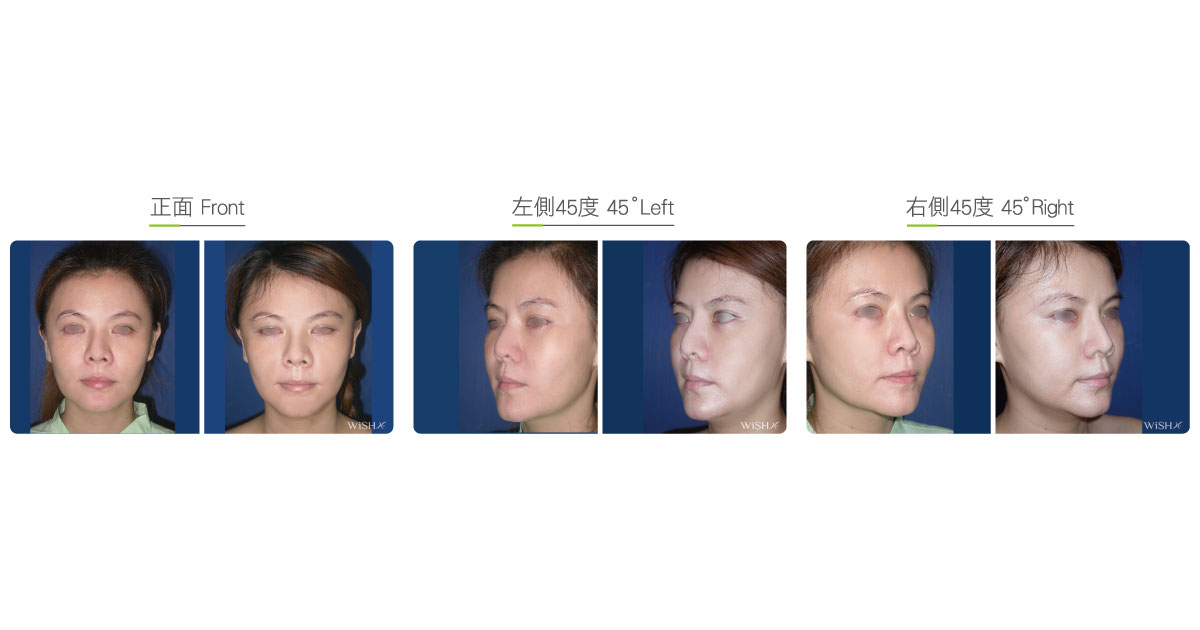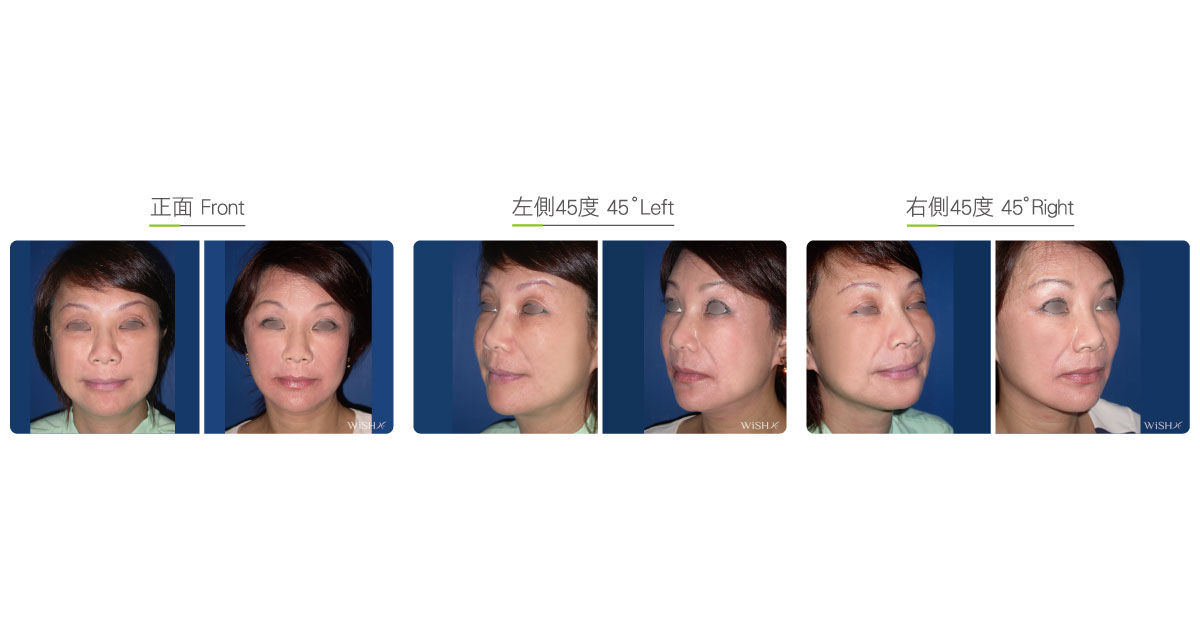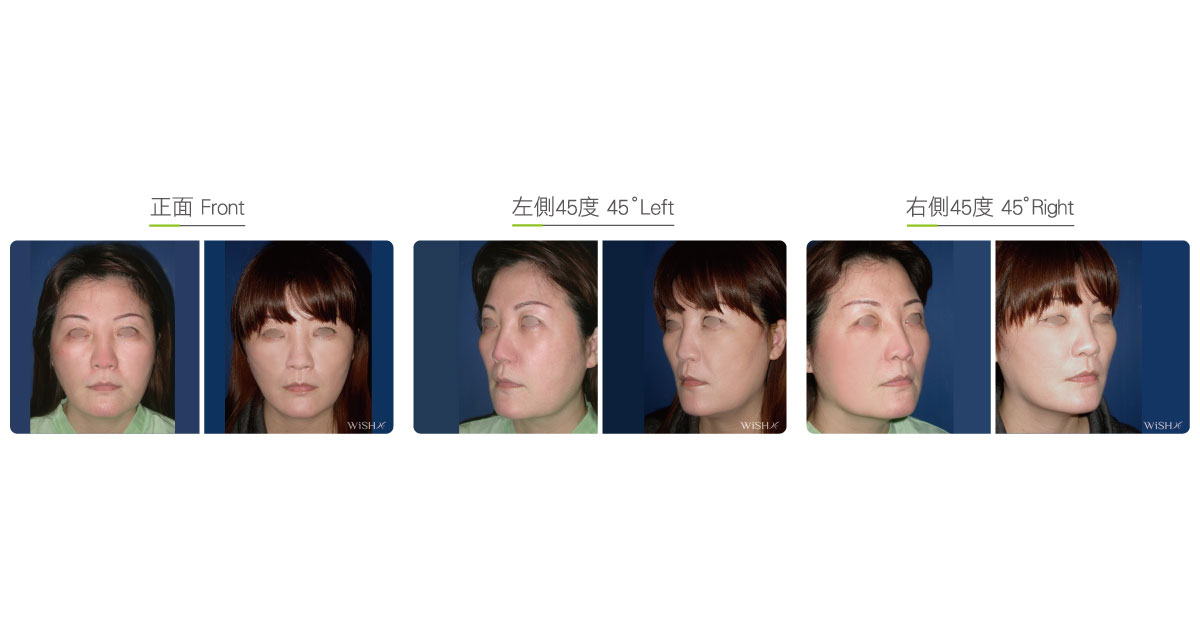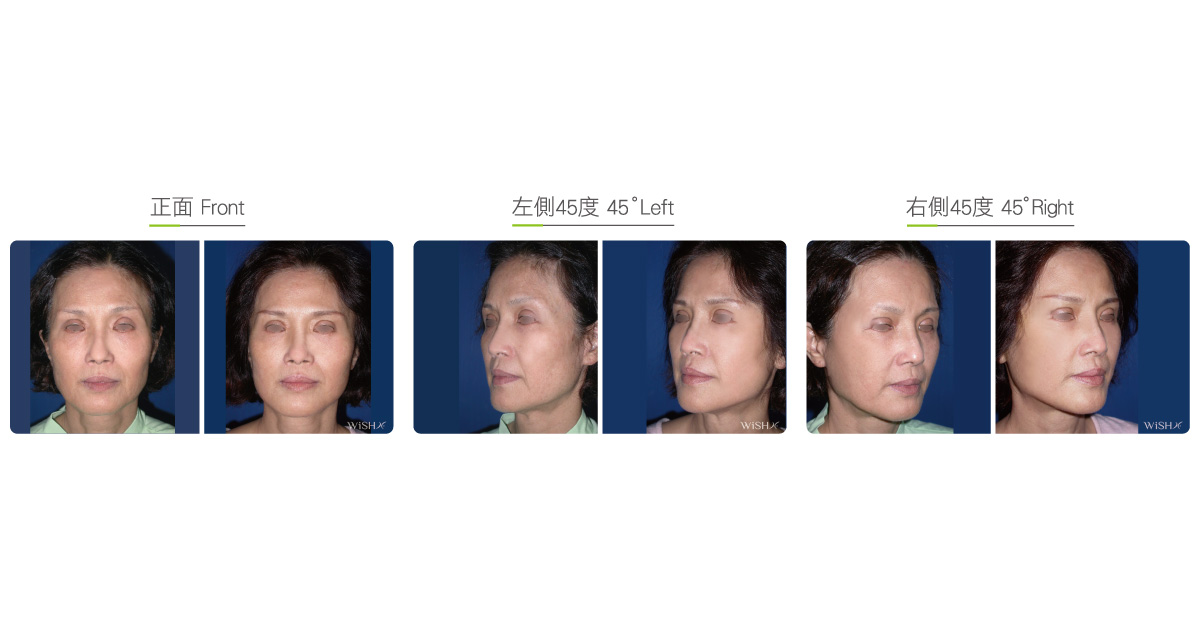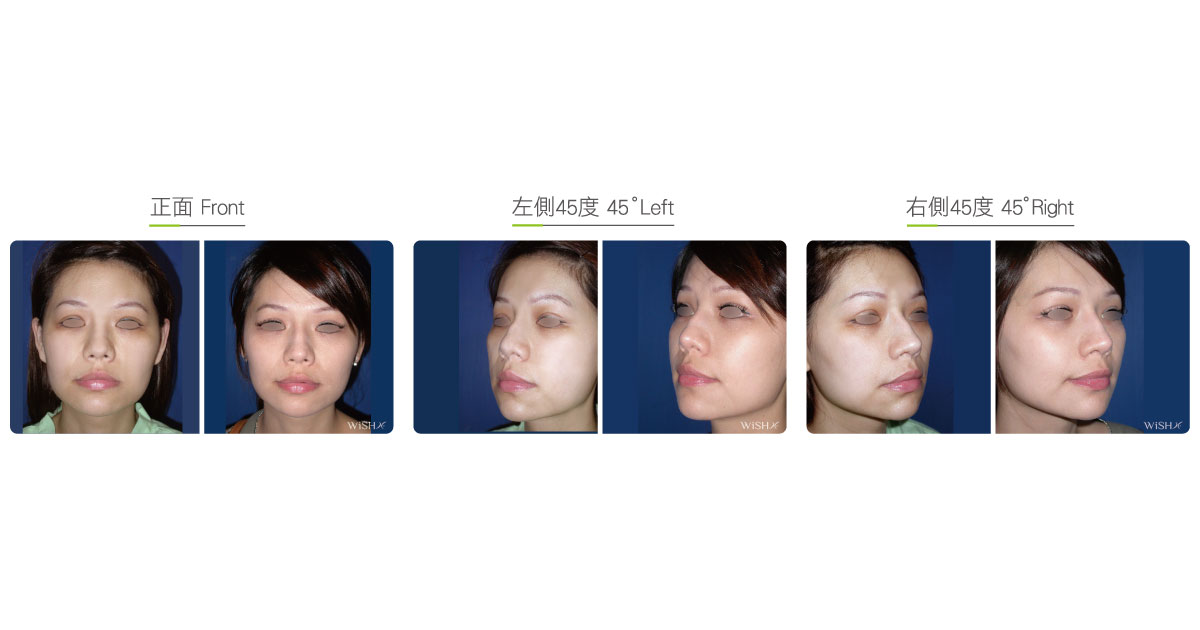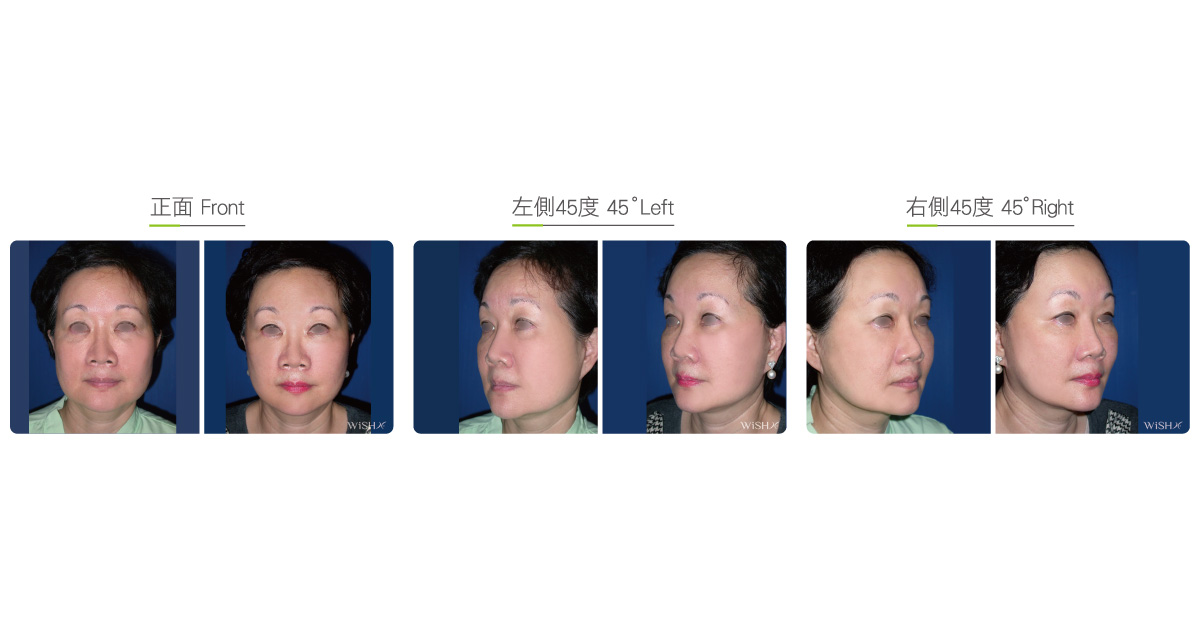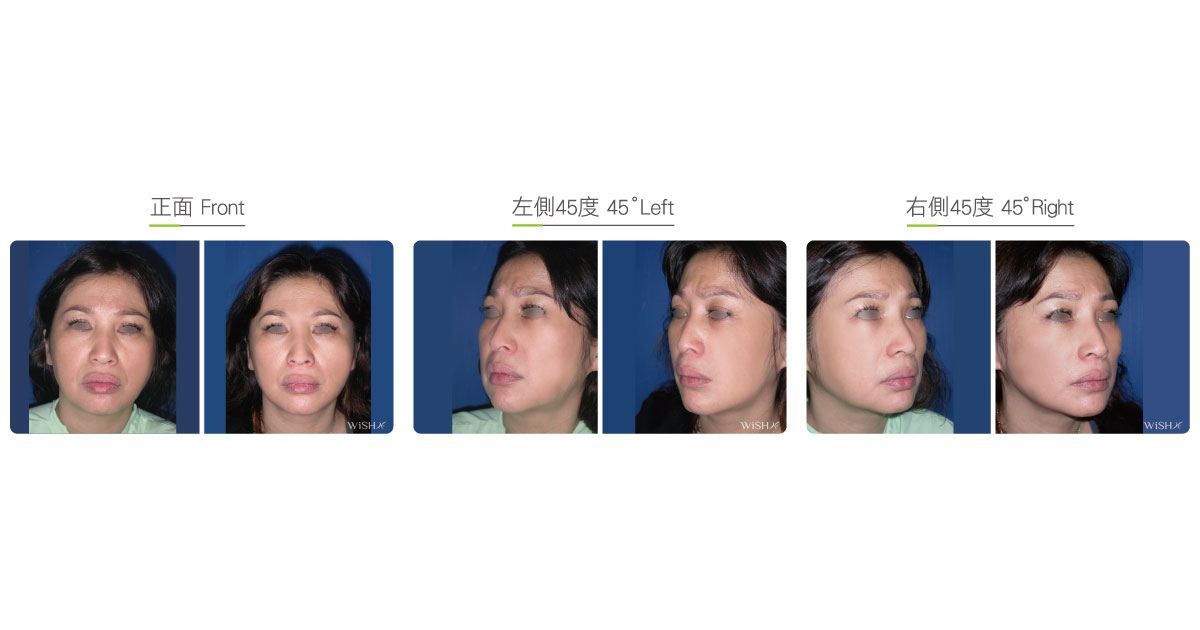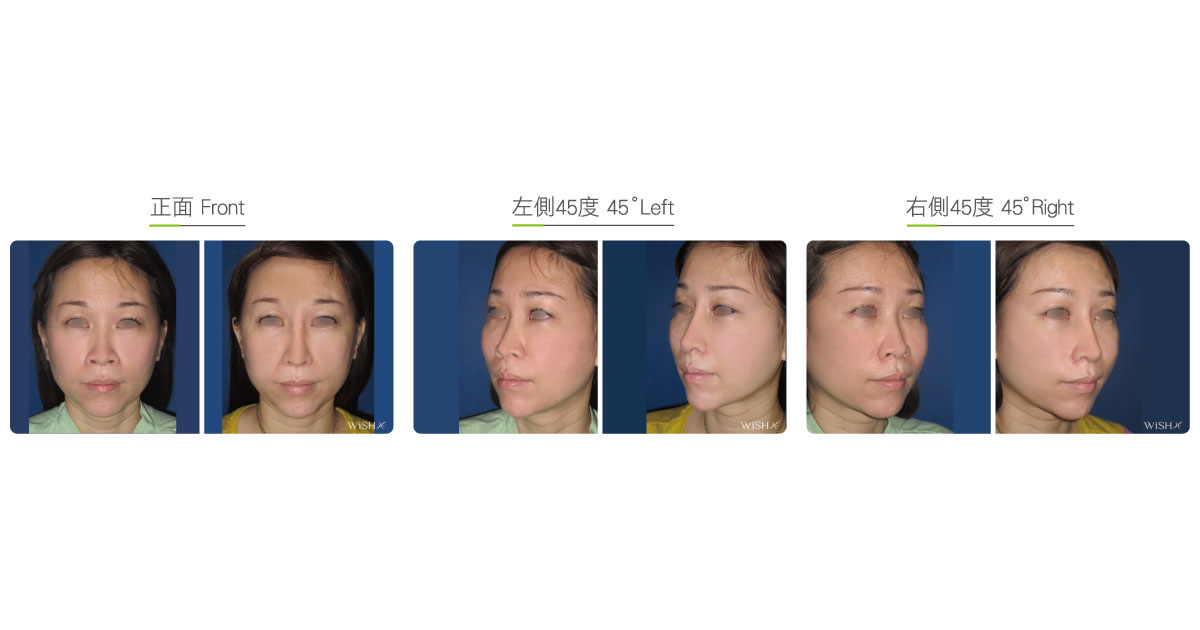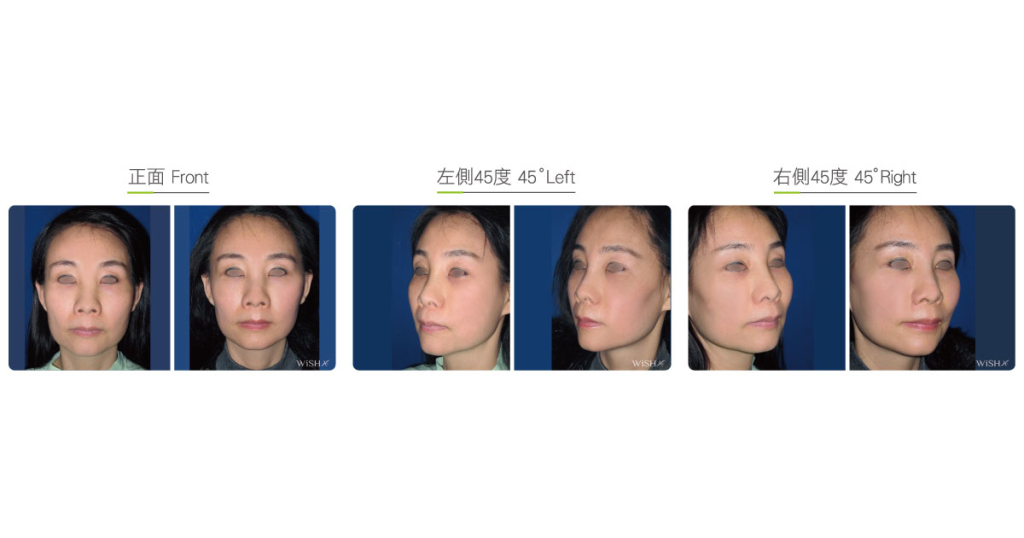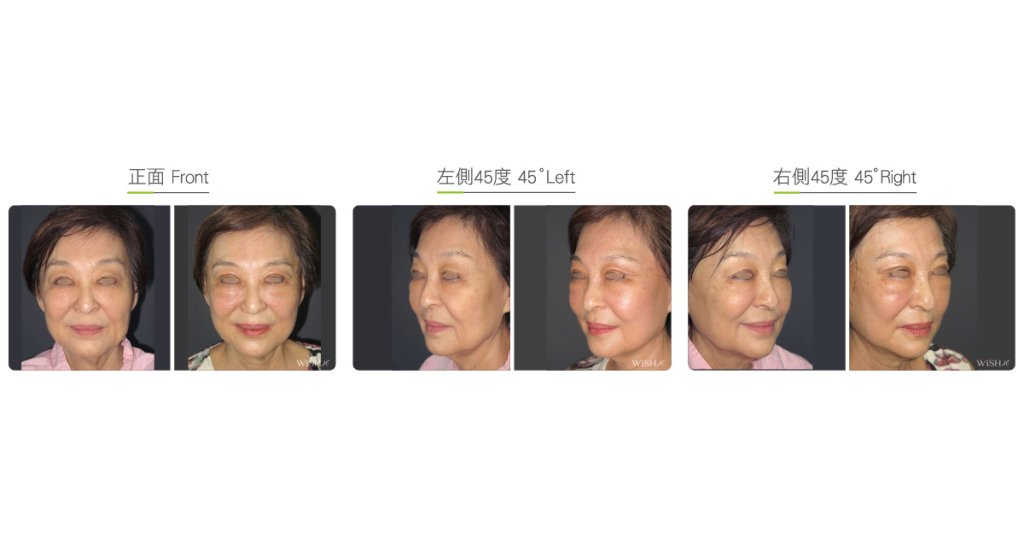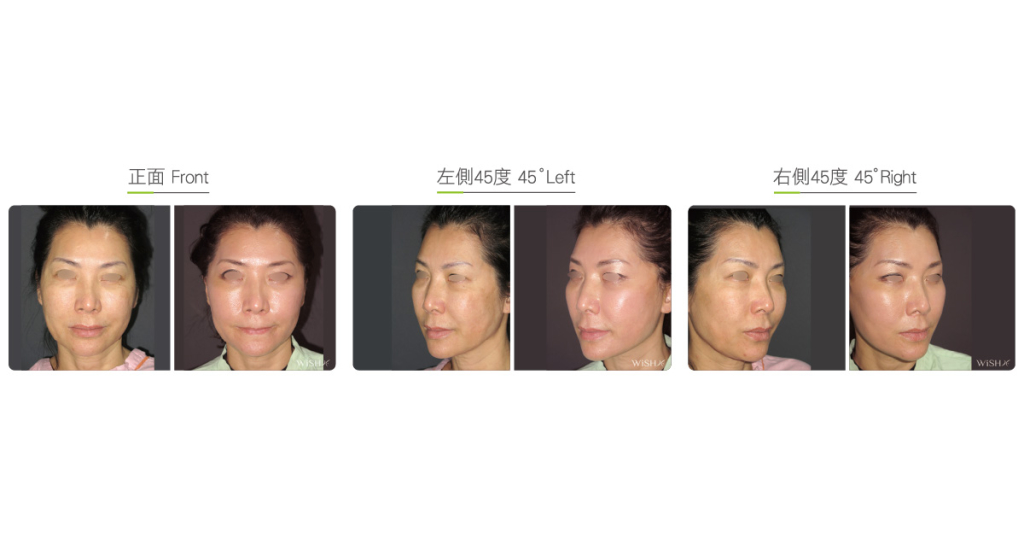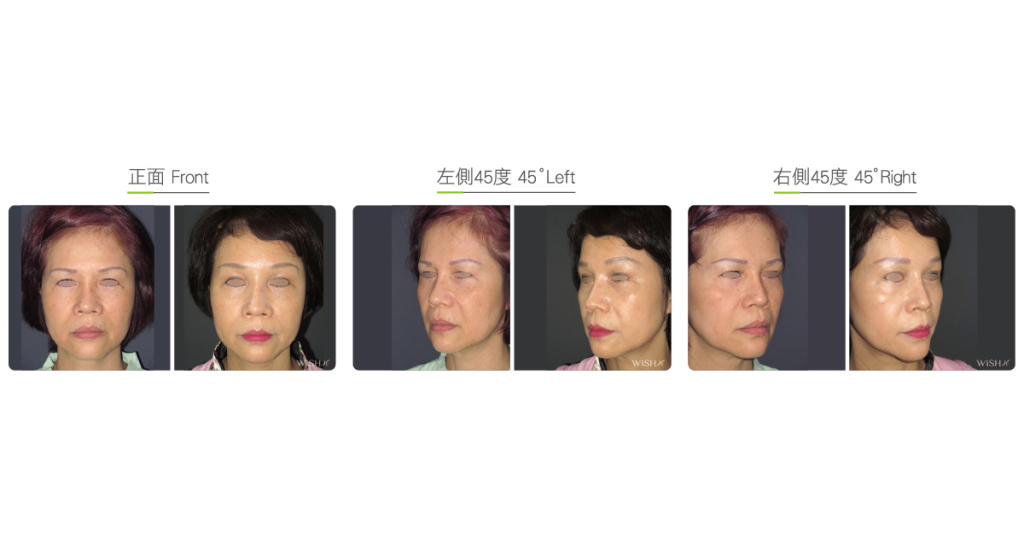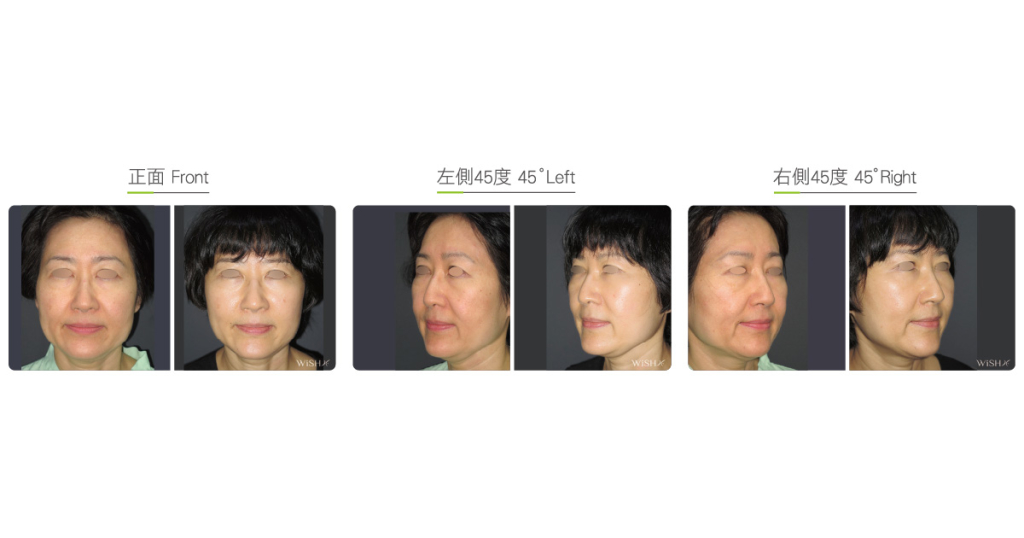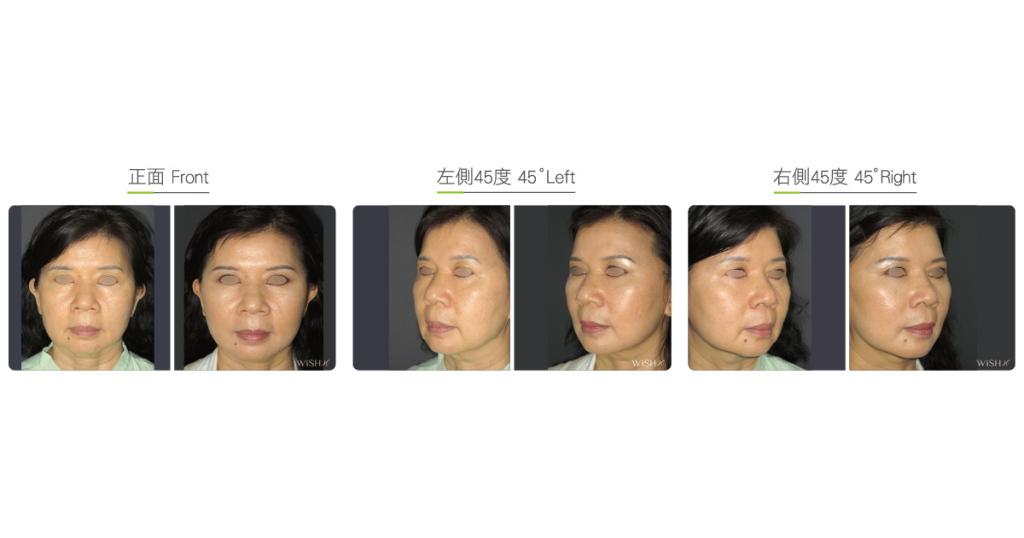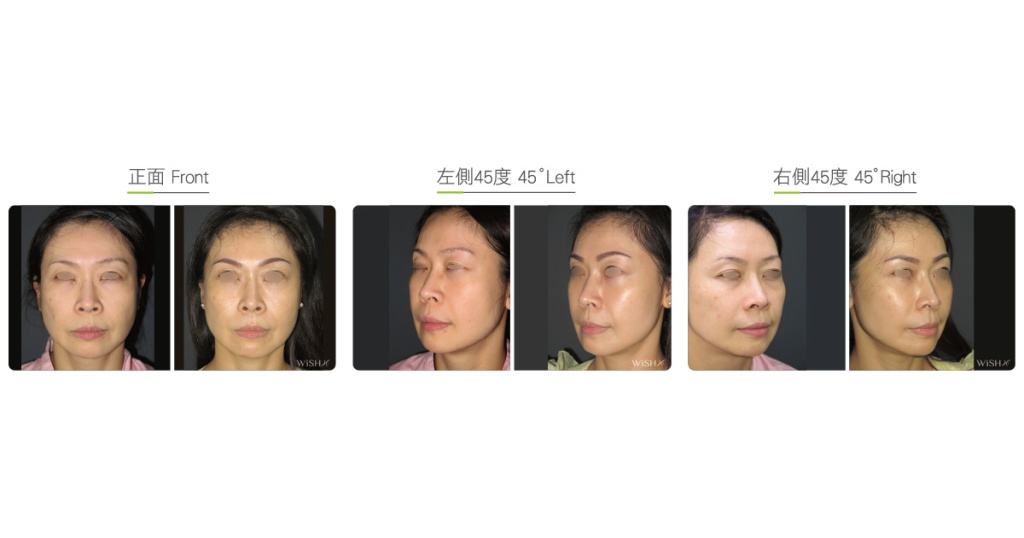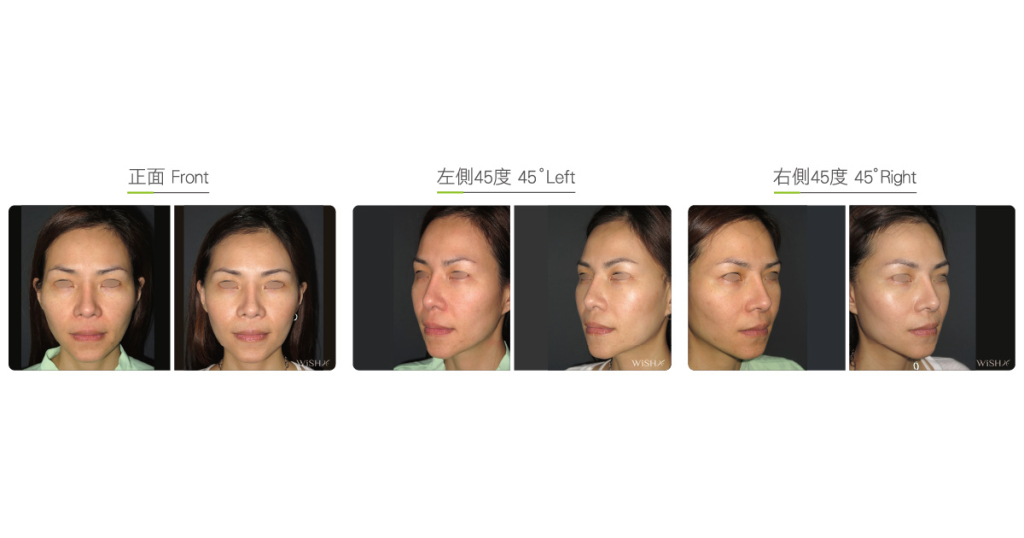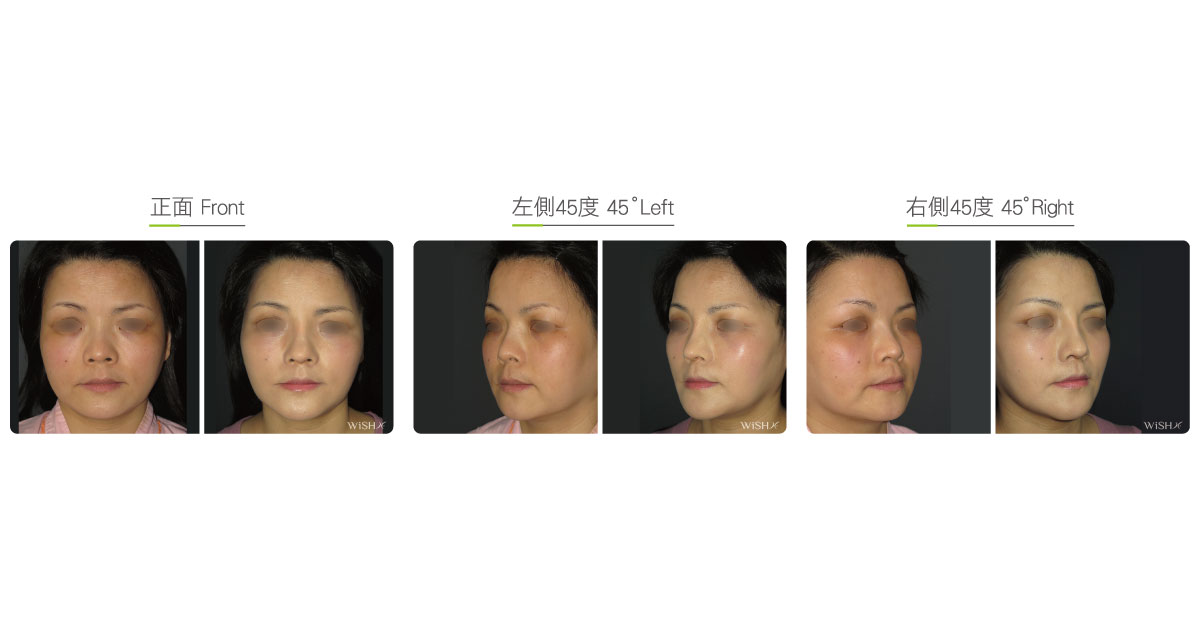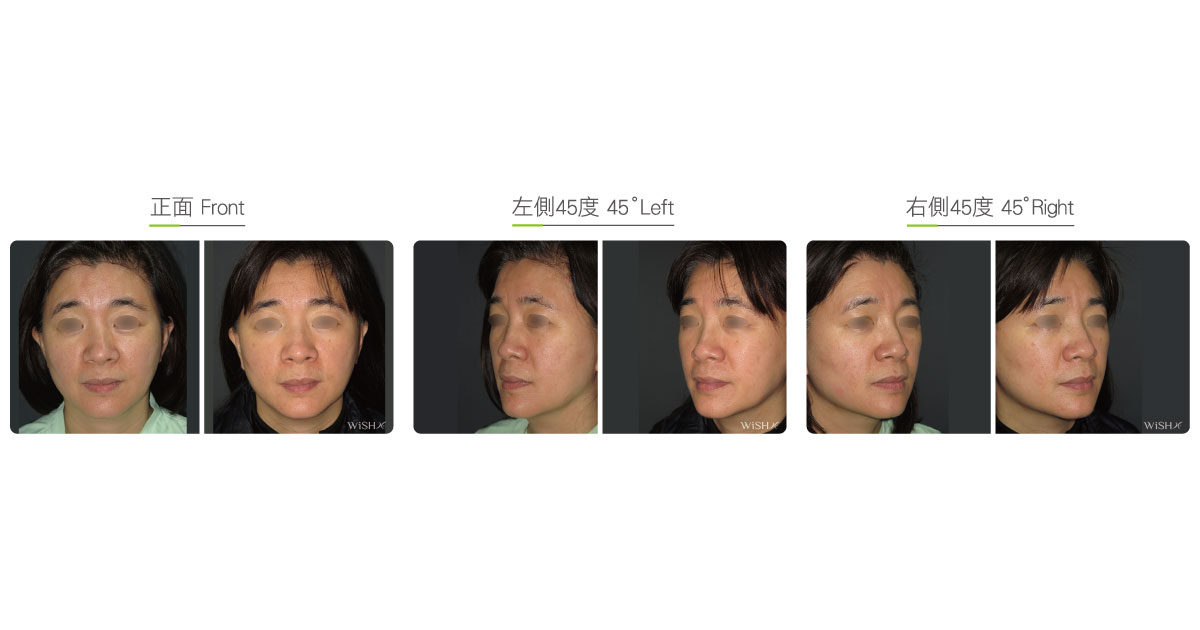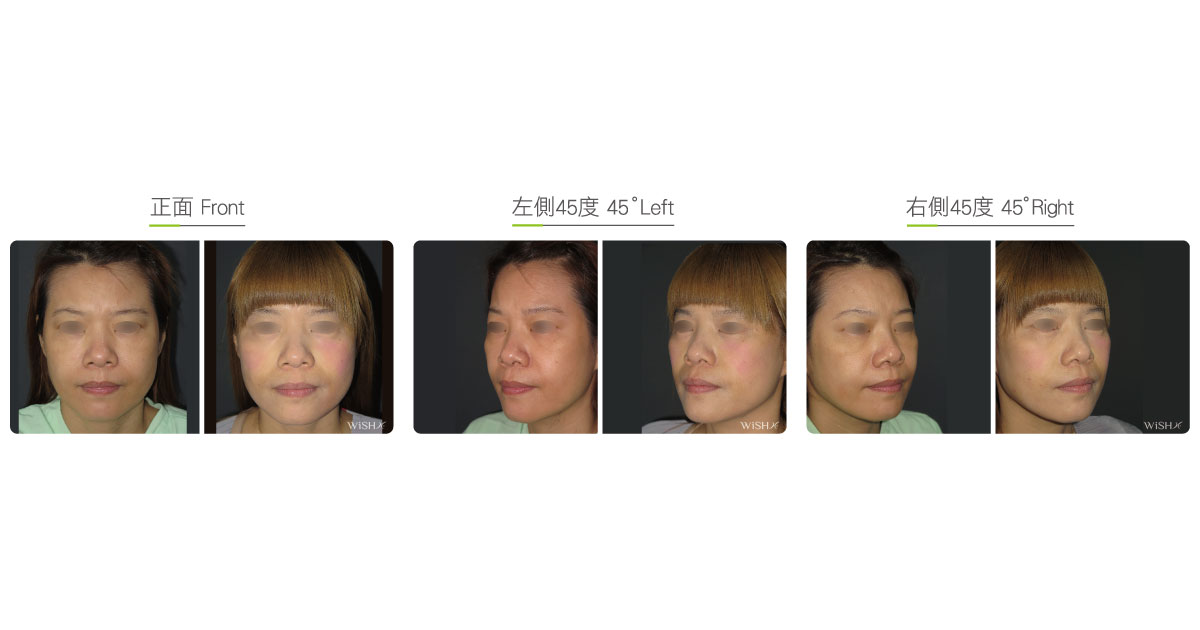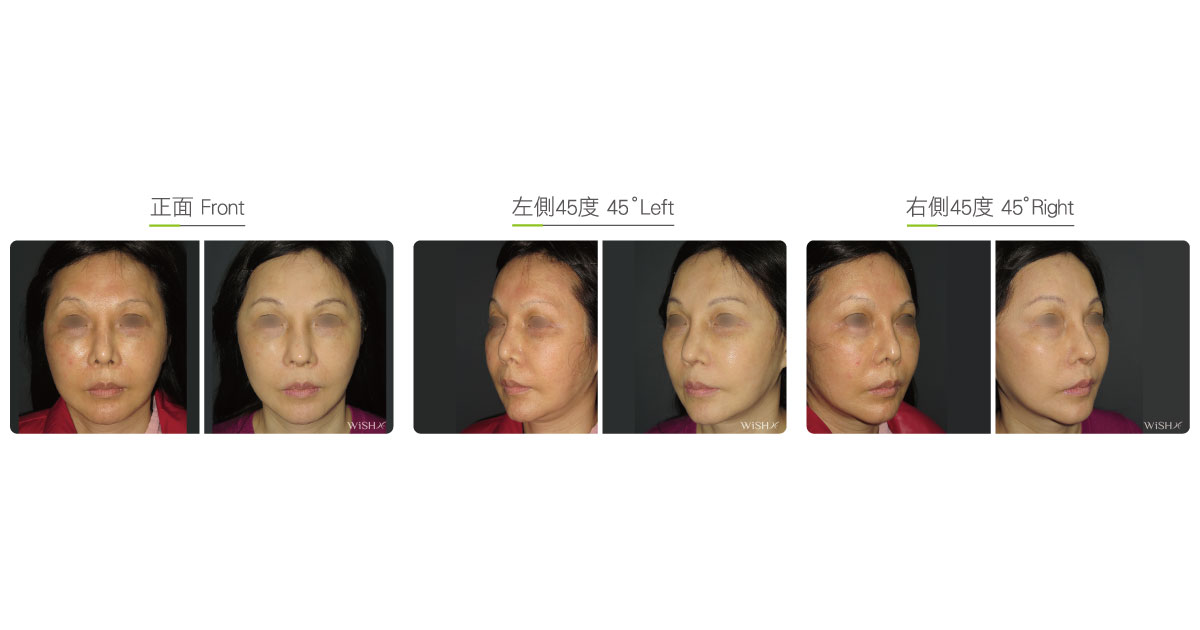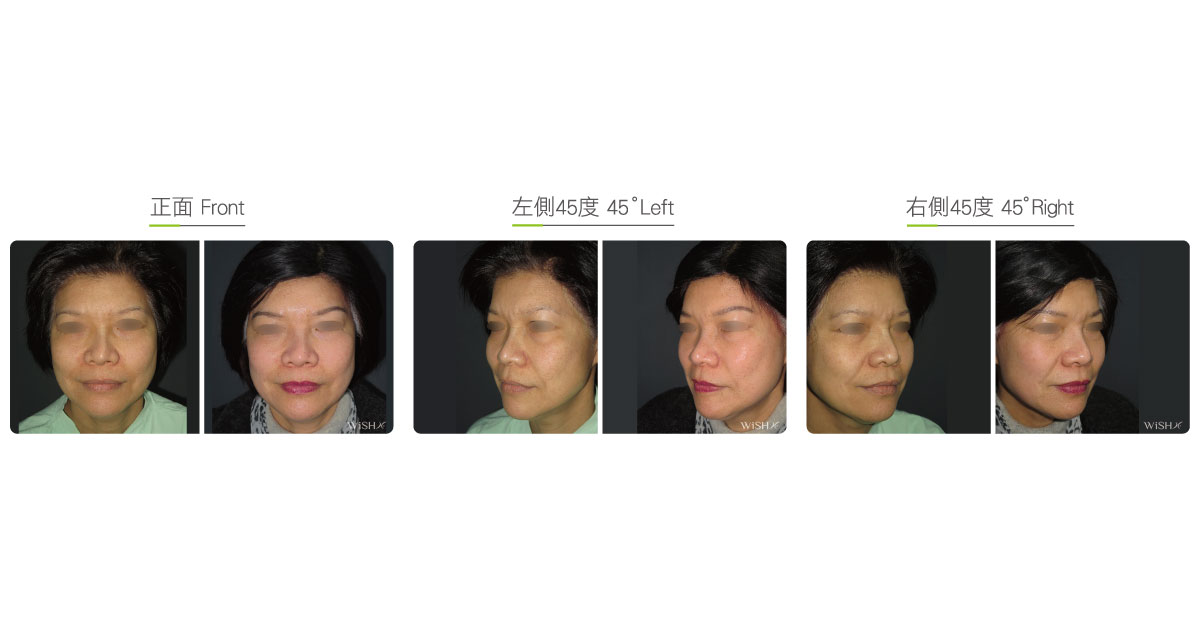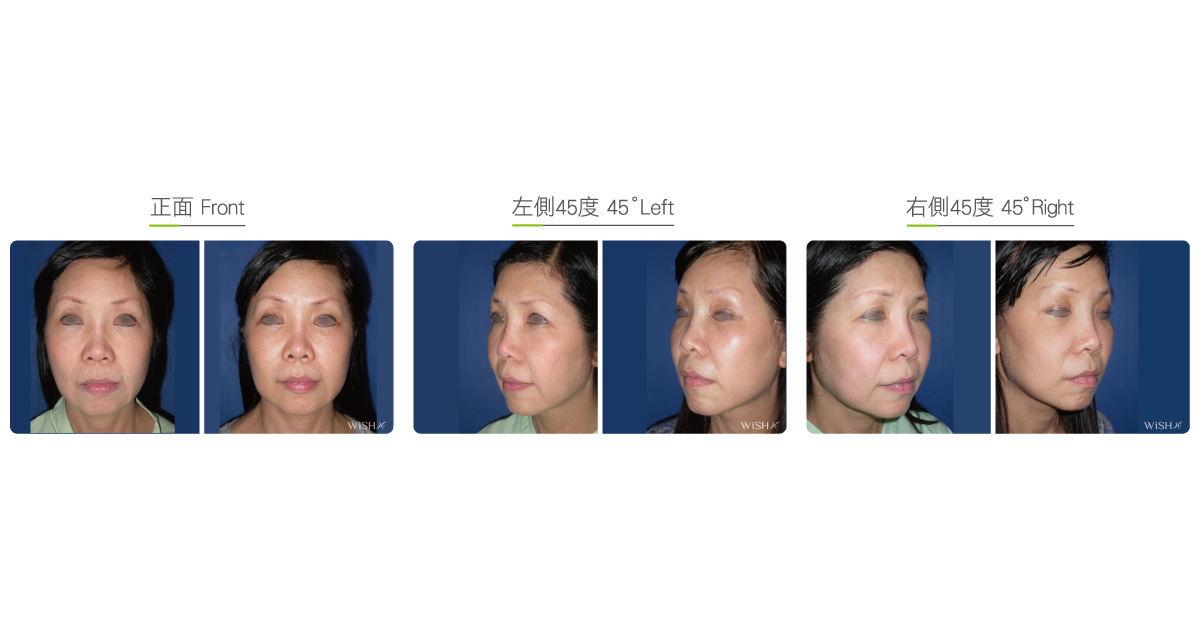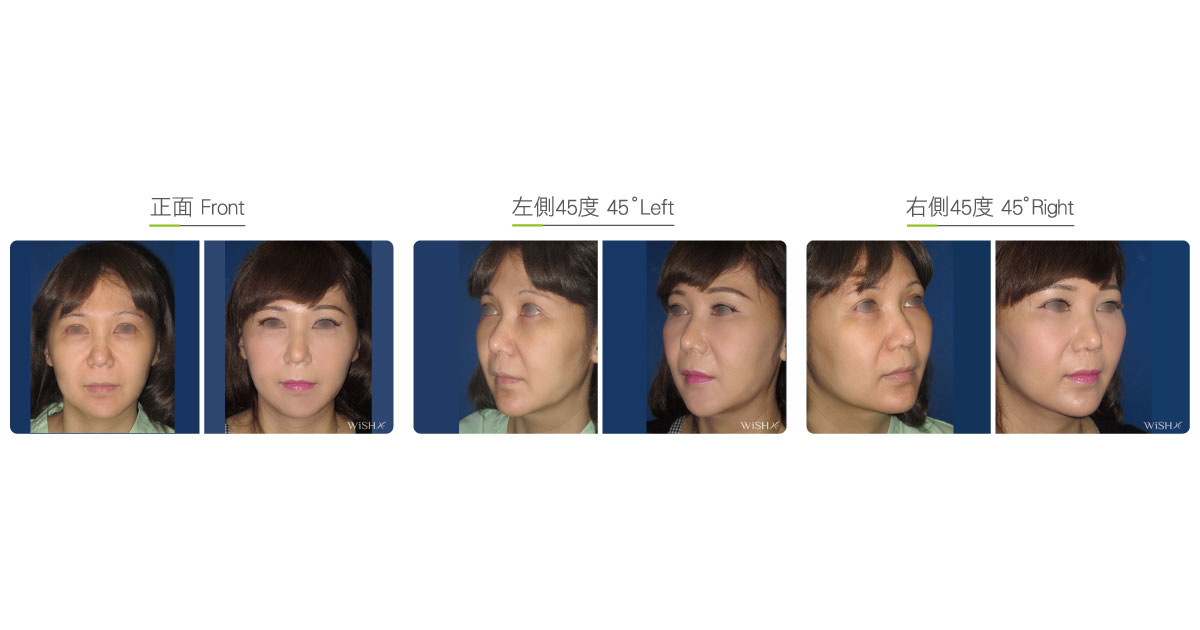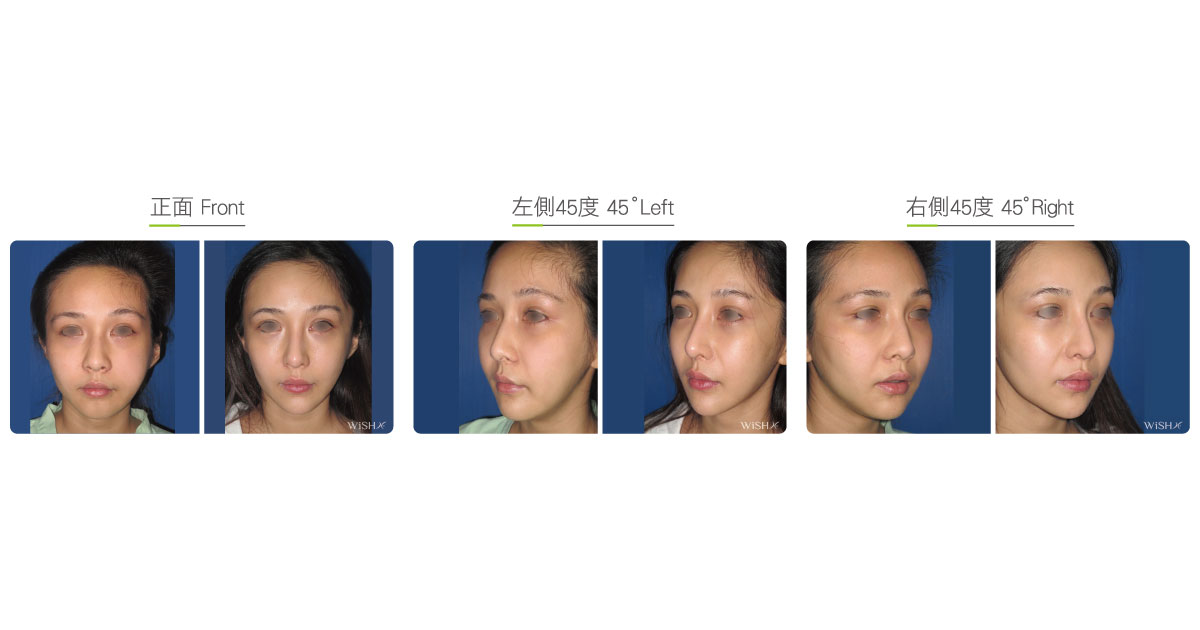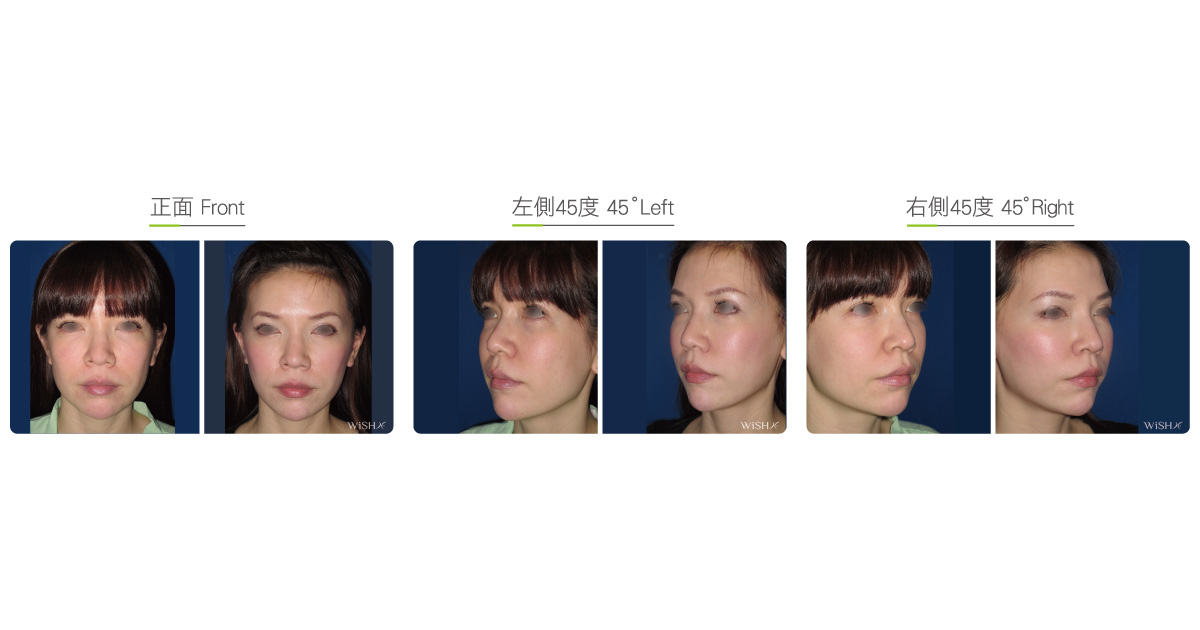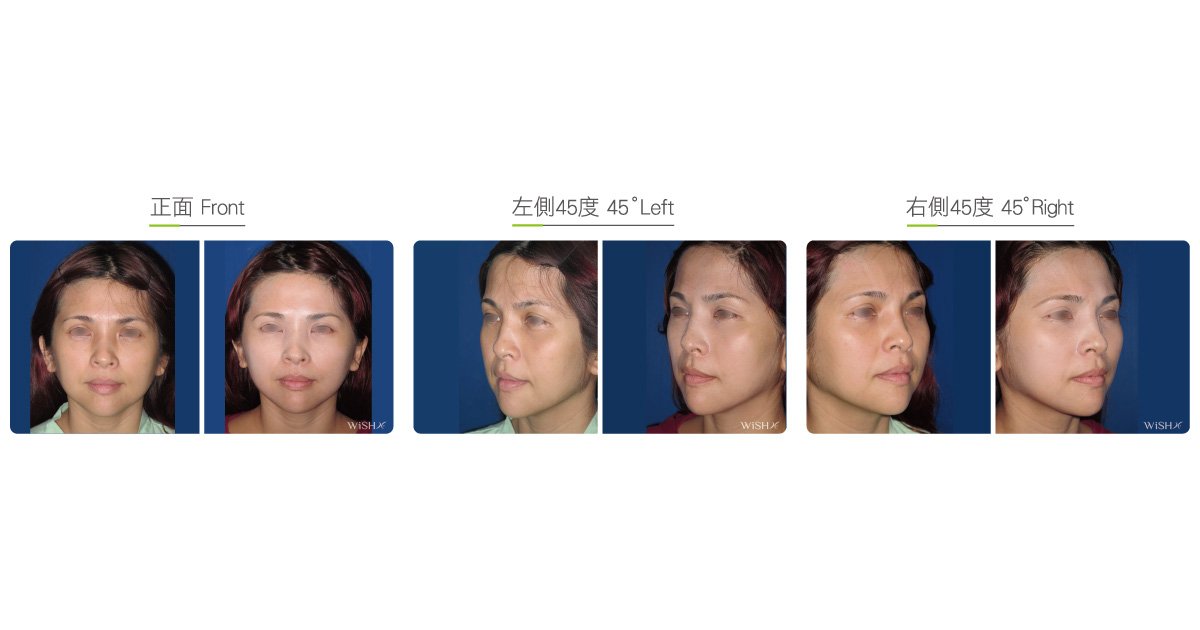Regional Fascia Lift
It is also called “regional midface lift” and is a minimally invasive fascia lift surgery. The main concept of this surgery is to lift the composite flap of loosened midface skin including the superficial fascia in the posterior superior direction (45°) and to remove excess scalp for sustaining an optimal result, which will therefore hide scars in the scalp. The surgery is performed by making an incision of approximately 2 cm on the scalp above the temple. Via the incision, blood vessels and nerves in the scalp are separated before the proper dissection of subcutaneous superficial fascia, and the range is limited to the area adjacent to the hairline. Therefore, the skin will not suffer from too much trauma or swelling. After the flap is well dissected, the whole unit of distal skin and superficial fascia can be pulled upward toward the back by lift threads and secured to the deep fascia at the incision. Thus, the overall midface skin, as well as the fascial layer, is effectively stretched and lifted to the posterior portion of the scalp. Lastly, excess scalp tissue is removed to enhance surgical tightening and ensure the duration of results, which lasts for approximately 2–3 years on average.
This surgery produces an instant and obvious tightening effect on the lateral midface and part of lower facial skin laxity, and the results are more stable and last longer than a simple thread embedding lift. It not only addresses early cheek sagging in numerous women at the initial stage but also effectively delays or prevents sagging of the cheek, nasolabial folds, or even fat pads around the mouth to make the mid-lower face and jawline tighter, thus offering the benefits of V-shaped face contouring. Moreover, as the surgical extent is predominantly confined within the medial margin of the scalp, there is almost no facial swelling or recovery period after the operation, but the results are quick and natural. Consequently, it is a preliminary surgery to improve early facial aging problems in young and middle-aged patients.
Surgical conditions
Duration
- Type of anesthesia: IV sedation + local anesthesia
- Type of incision: An incision of approximately 2 cm in the scalp above the temples
- Recovery: 1–2 days
- Removal of sutures: 7–10 days
General instructions
No food and water on the day of surgery
- Rubbing or pressing the incisions on the forehead and scalp should be avoided for 1 month postoperatively.
- Hair dying or perming should be avoided for 2 months postoperatively to prevent unwanted irritation or allergy.
- Very good scalp care should be maintained for 3 months postoperatively to prevent hair loss.
Ideal candidates
- Individuals with mild or moderate midface skin sagging.
- Individuals with gradual laxity of nasolabial folds, jawline, or lower facial skin (fat bags around the mouth).
- Individuals with premature skin sagging due to prior bone reduction.
- Individuals requiring more effective surgeries than non-surgical facial tightening therapy (such as Ulthera or Thermage) or barbed thread lift.
- Individuals who received a thread lift or Quill lift but had poor results.
- Individuals undergoing this surgery to complement the shortcomings of other facelift procedures.
Potential complications
- Scalp scars
- Local hair loss
- Temporary scalp numbness or itching
- Poor wound healing
- Temporary scalp pinhole-shaped depressions
- Incomplete correction
Surgical advantages
-
The lateral cheeks can be comprehensively elevated, and the nasolabial folds and fat pads around the mouth can be concurrently addressed.
-
Surgical wounds are hidden in the scalp, leaving no scars on the face.
-
The results are obvious and instant.
-
Surgical trauma is small and heals rapidly.
-
No risk of nerve or blood vessel injury; highly safe.
-
As a superficial fascia lift, it would not compromise facial expression and has a natural effect.
-
It may be repetitively performed, which will maintain a rejuvenated and refreshed appearance.
-
Depending on patients’ requirements, the surgery may lift the eyelids or brow-tails.
Surgical drawbacks
-
This surgery makes less improvement in patients with hollowing midface or tear-through groove.
-
There might be hair loss near the scalp incisions.
-
Poor healing might occur due to tight closure of the scalp incisions.
-
The results may not last as long as in a traditional facelift.
-
There might be temporary or permanent numbness in the scalp adjacent to the incisions.
-
There might be some changes in the hairline near the temples.

